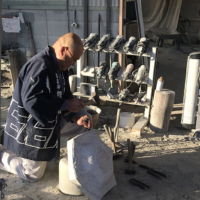I was talking to a joshikōsei (女子高生, high school girl) friend of mine (yes, I'm fully aware of this exalted position) and she told me that these days in sociology class, Japanese teens are taught that by the time they start paying taxes, the ratio of college grad workers to nenkinzoku (年金族, pension plan tribe) will be 1 to 3.5. This means my friend must carry the equivalent of 3.5 persons over 65 on her frail shoulders, with her taxes, until she herself retires. Currently, the ratio is 1 to 1.5.
I looked at her stricken as she went on to say that at the tender age of 17, she has decided to start a rōgo chokin (老後貯金, old-age savings account). I reflected on my own, clueless, reckless ōbaka (大バカ, super dumb) three years in high school and could only bow my head in shame. "Gomenasai! (ごめんなさい, I'm sorry). Gomenasai for getting old in this shōshi kōrei jidai (少子高齢時代, era of too few kids and too many oldies)!"
Japan wasn't always so old and gray and genki ga nai (元気がない, without energy) as it is today, racking up the government deficit and medical bills like there was no tomorrow. Back in the days when this society was young, crass and ruthless, and generally contemptuous of anyone not capable of pulling his or her weight.



















With your current subscription plan you can comment on stories. However, before writing your first comment, please create a display name in the Profile section of your subscriber account page.